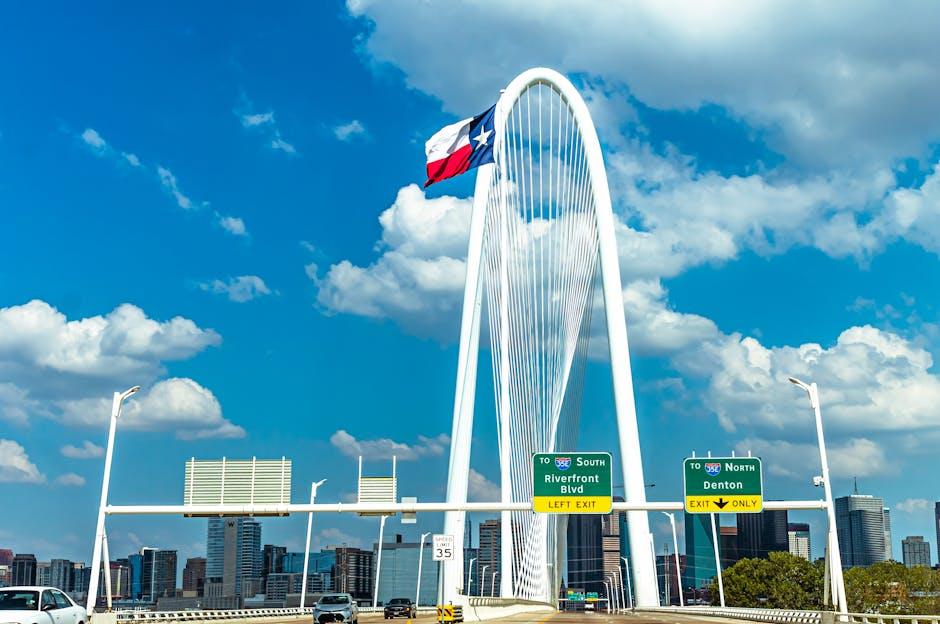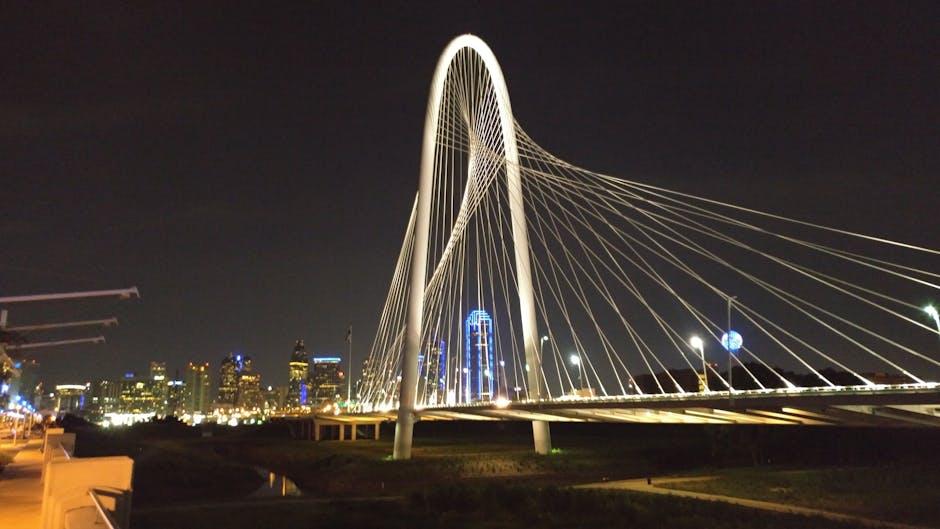In the sprawling urban landscape of Dallas, the roads are more than mere pathways—they’re silent architects shaping the way vehicles respond to every twist, turn, and bump. From the smooth stretches of newly paved highways to the unpredictable patches of worn asphalt, the varied terrain beneath wheels plays a crucial role in defining a vehicle’s suspension performance. Understanding how Dallas roads impact suspension isn’t just about maintaining a comfortable ride; it’s about navigating a city where every road condition tells a story, influencing everything from vehicle longevity to driver safety. This article delves into the intricate relationship between Dallas’s unique road conditions and the suspension systems designed to withstand them.
Table of Contents
- The Unique Terrain of Dallas and Its Effect on Vehicle Suspensions
- Common Road Surface Types in Dallas and Their Wear on Suspension Systems
- Seasonal Weather Patterns and Their Role in Suspension Damage
- How Urban Infrastructure Choices Influence Suspension Longevity
- Practical Maintenance Tips for Mitigating Suspension Wear in Dallas
- Innovations in Suspension Design Tailored to Dallas Road Conditions
- Q&A
- To Wrap It Up

The Unique Terrain of Dallas and Its Effect on Vehicle Suspensions
Dallas roads are a mosaic of varying surfaces, from smooth asphalt highways to stretches dotted with unexpected potholes and uneven patches. This mix challenges vehicle suspensions to adapt constantly, demanding more from shock absorbers, springs, and struts than they would on uniformly maintained streets. The city’s unique terrain, shaped by its sprawling urban development and the natural clay-rich soil beneath, tends to shift with seasonal moisture changes, causing subtle but frequent road warping. Vehicles that navigate these dynamic conditions often experience accelerated wear, leading to the need for more frequent maintenance or upgrade in suspension components to maintain ride comfort and control.
Several factors contribute to the distinct suspension demands placed on cars in Dallas:
- Clay soil expansion and contraction: Causes periodic upheaval of road surfaces, creating uneven terrain.
- Rapid urban growth: Leads to a mix of old and newly paved roads with inconsistent quality.
- Extreme weather fluctuations: Heat and rain cycles accelerate road degradation, increasing suspension strain.
| Road Type | Common Issues | Impact on Suspension |
|---|---|---|
| Paved Highways | Minor cracks, smooth surface | Low stress, longer component life |
| Residential Streets | Potholes, uneven patches | Moderate wear and tear |
| Construction Zones | Loose gravel, bumps | High impact, potential damage |

Common Road Surface Types in Dallas and Their Wear on Suspension Systems
Dallas boasts a patchwork of pavement types, each bearing a unique impact on vehicle suspension systems. The city’s expansive network includes asphalt roads, predominant in residential neighborhoods, which generally offer a smoother ride but can degrade quickly under Texas heat—leading to cracks and potholes that jolt suspensions. Meanwhile, stretches of concrete highways provide durability yet feature expansion joints and seams that cause repetitive bouncing, gradually wearing down shocks and struts.
Less common but still influential are the gravel and chip seal roads found on the outskirts and less-traveled routes. These surfaces create constant vibration and uneven tire traction, stressing suspension bushings and alignment. Below is a comparison table illustrating the general wear patterns caused by common road surfaces in Dallas:
| Road Type | Suspension Impact | Common Issues |
|---|---|---|
| Asphalt | Moderate jolts, heat-induced cracks | Shock absorber wear, occasional alignment issues |
| Concrete | Constant vibration, seam impacts | Strut damage, accelerated bushing wear |
| Gravel/Chip Seal | High vibration, uneven contact | Loose components, premature tire wear |

Seasonal Weather Patterns and Their Role in Suspension Damage
Dallas experiences a unique blend of seasonal weather that significantly influences the wear and tear on vehicle suspensions. During the hot Texas summers, expansive heat causes asphalt to soften and, over time, crack and form potholes. These surface imperfections create a bumpy ride that can strain shocks, struts, and other suspension components. Conversely, the cold snaps and occasional ice bringing sudden temperature swings can cause the road to contract and expand, further aggravating existing cracks or causing new fractures in the pavement. This relentless give-and-take weakens the suspension system, gradually reducing its effectiveness and longevity.
Key seasonal impacts on suspension in Dallas include:
- Summer heat: Pavement softening and increased pothole formation.
- Winter cold: Freeze-thaw cycles accelerating road surface deterioration.
- Spring rains: Water weakening the road base, leading to surface instability.
- Autumn debris: Fallen leaves and moisture creating slippery conditions that can mask road damage.
| Season | Road Effect | Suspension Risk |
|---|---|---|
| Summer | Softened asphalt & potholes | Shock absorber strain |
| Winter | Cracks & surface contraction | Component fatigue & wear |
| Spring | Water infiltration & erosion | Alignment issues |
| Autumn | Slippery debris | Reduced traction affects handling |

How Urban Infrastructure Choices Influence Suspension Longevity
Urban infrastructure decisions, especially the materials and techniques used in road construction, profoundly affect vehicle suspension systems. In Dallas, the widespread use of rigid concrete slabs interspersed with pavement joints can create a unique challenge. These joints often lead to repetitive impact stress on suspension components as cars hit the subtle gaps at high speeds. Furthermore, the city’s rapid development means ongoing construction zones with uneven temporary surfaces, requiring suspensions to constantly adapt to changing terrain. This variability accelerates wear on shock absorbers, bushings, and struts, meaning vehicles navigating these routes endure a kind of suspension “workout” that can shorten their functional lifespan.
Moreover, the design of Dallas roadways tends to prioritize expanding capacity over smoothing transitions, which means frequent changes in elevation and sharp curbs are common. These elements place extra strain on suspension geometry and alignment, potentially leading to misalignment and uneven tire wear. To better illustrate the relationship between urban road features and suspension stress, consider the table below showing typical Dallas road characteristics affecting suspension health:
| Road Feature | Impact on Suspension | Maintenance Challenges |
|---|---|---|
| Concrete pavement joints | Repeated jolts causing shock absorber fatigue | Hard to predict; requires frequent inspections |
| Construction zone roughness | Variable terrain leads to uneven component wear | Temporary fixes mask long-term damage |
| Elevation changes & curb cuts | Strain on suspension geometry | Alignment drift; tire wear acceleration |

Practical Maintenance Tips for Mitigating Suspension Wear in Dallas
Maintaining your vehicle’s suspension in a city like Dallas requires a proactive approach, especially given the frequent road imperfections that challenge the system’s durability. Regular inspections of shock absorbers and struts help catch wear early before it evolves into costly damage. Additionally, keeping your tires properly inflated and aligned not only extends tire life but also reduces undue strain on suspension components caused by uneven road surfaces common around Dallas. Using quality lubricants on suspension joints, particularly after exposure to rain or dust, can prevent corrosion and keep your ride smooth and stable.
Incorporate routine checks into your vehicle care regimen using a simple checklist that targets the most vulnerable suspension parts exposed to Dallas road conditions:
- Springs: Look for cracks or sagging in coil or leaf springs.
- Bushings: Inspect for wear or tears in rubber bushings which cushion rattling joints.
- Ball joints: Assess for looseness or noise during steering or cornering.
- Control arms: Ensure no bending or damage is present after impacts.
| Maintenance Task | Recommended Frequency | Benefit |
|---|---|---|
| Visual Suspension Inspection | Every 6 months | Early detection of wear and tear |
| Tire Inflation & Alignment Check | Monthly | Reduces uneven suspension stress |
| Lubricating Joints | Every 3 months | Prevents corrosion and noise |

Innovations in Suspension Design Tailored to Dallas Road Conditions
Dallas drivers face a unique set of challenges due to the city’s diverse road conditions, from patchy pavements to sudden potholes formed after seasonal rains. To address these, modern suspension systems have evolved to incorporate adaptive technologies that intelligently respond to road irregularities in real time. Features like electronically controlled dampers and air suspension setups work together to absorb shocks more effectively, ensuring a smoother ride even on the roughest stretches. This innovation helps prolong vehicle longevity and improves safety by maintaining tire contact with the road surface, which is crucial for handling and braking performance.
Several manufacturers have introduced tailored suspension components specifically engineered for urban areas like Dallas, where stops-and-go traffic and uneven surfaces combine to wear down traditional setups quickly. Innovations include:
- Variable rate springs that adjust stiffness for comfort without sacrificing control.
- Enhanced bushings designed to reduce vibrations transmitted through the chassis.
- Sensor-integrated control units that optimize suspension behavior based on pavement feedback.
| Feature | Benefit | Dallas Road Challenge |
|---|---|---|
| Adaptive Dampers | Responsive shock absorption | Uneven road surfaces |
| Air Suspension | Adjustable ride height | Frequent potholes |
| Reinforced Bushings | Vibration reduction | Stop-and-go traffic stress |
Q&A
Q: How do Dallas roads uniquely affect vehicle suspension systems?
A: Dallas roads present a mix of challenges for vehicle suspension. The city features a combination of rough textures, potholes, and uneven surfaces due to its climate and heavy traffic, which can strain suspension components faster than smoother roads.
Q: What aspects of Dallas’s climate contribute to road conditions impacting suspensions?
A: Dallas experiences hot summers and occasional freeze-thaw cycles in winter. These temperature fluctuations cause road materials to expand and contract, leading to cracks and potholes that jolt suspensions with each drive.
Q: Are there particular types of roads in Dallas that cause more wear on suspensions?
A: Yes. Construction zones, older residential streets with cracks, and less-maintained suburban roads tend to have more imperfections, increasing the likelihood of suspension wear compared to newly paved highways or urban thoroughfares.
Q: How does frequent stop-and-go traffic in Dallas impact suspension health?
A: Constant stopping and starting puts stress on shocks and struts, as suspensions must absorb repeated weight shifts and impacts, potentially leading to premature wear or the need for more frequent maintenance.
Q: Can Dallas drivers do anything to mitigate suspension damage from road conditions?
A: Absolutely. Regular maintenance checks, cautious driving over potholes, and timely repairs can extend suspension life. Choosing tires suited for rougher surfaces and avoiding abrupt maneuvers also help cushion the impact of Dallas roads.
Q: Does Dallas city infrastructure plan or repair roads with suspension health in mind?
A: While city efforts aim to improve road quality for all vehicle components, budget constraints and frequent traffic demand can delay repairs. However, ongoing maintenance projects strive to reduce hazards that damage suspensions.
Q: How does suspension wear on Dallas roads affect overall vehicle performance?
A: Worn suspension can lead to reduced ride comfort, poorer handling, increased tire wear, and potential safety issues, especially on Dallas’s varied and sometimes challenging road surfaces.
Q: Are there specific suspension types better suited for Dallas road conditions?
A: Vehicles equipped with durable, shock-absorbing suspensions or aftermarket upgrades designed for rougher terrain tend to perform better on Dallas roads, providing resilience against the bumps and potholes common in the city.
Q: What signs should Dallas drivers watch for indicating suspension damage?
A: Look out for excessive bouncing, uneven tire wear, pulling to one side, and unusual noises when driving over bumps. These symptoms signal that your suspension may be compromised by the city’s road conditions.
Q: In summary, how do Dallas roads shape the suspension experience for drivers?
A: Dallas roads, with their unique blend of climatic influences, traffic patterns, and maintenance challenges, demand attentive suspension care. Drivers who understand these impacts can better protect their vehicles and enjoy smoother rides despite the city’s bumps and bruises.
To Wrap It Up
In the intricate dance between vehicle and terrain, Dallas roads play a starring role in shaping the suspension experience. From the city’s sprawling highways to its quieter residential streets, each stretch tells a story of wear, resilience, and adaptation. Understanding how these diverse road conditions impact suspension not only informs better vehicle maintenance but also deepens our appreciation for the unseen challenges beneath every smooth—or bumpy—ride. As Dallas continues to evolve, so too will the roads that test and define the very suspension systems designed to keep us moving comfortably and safely.
